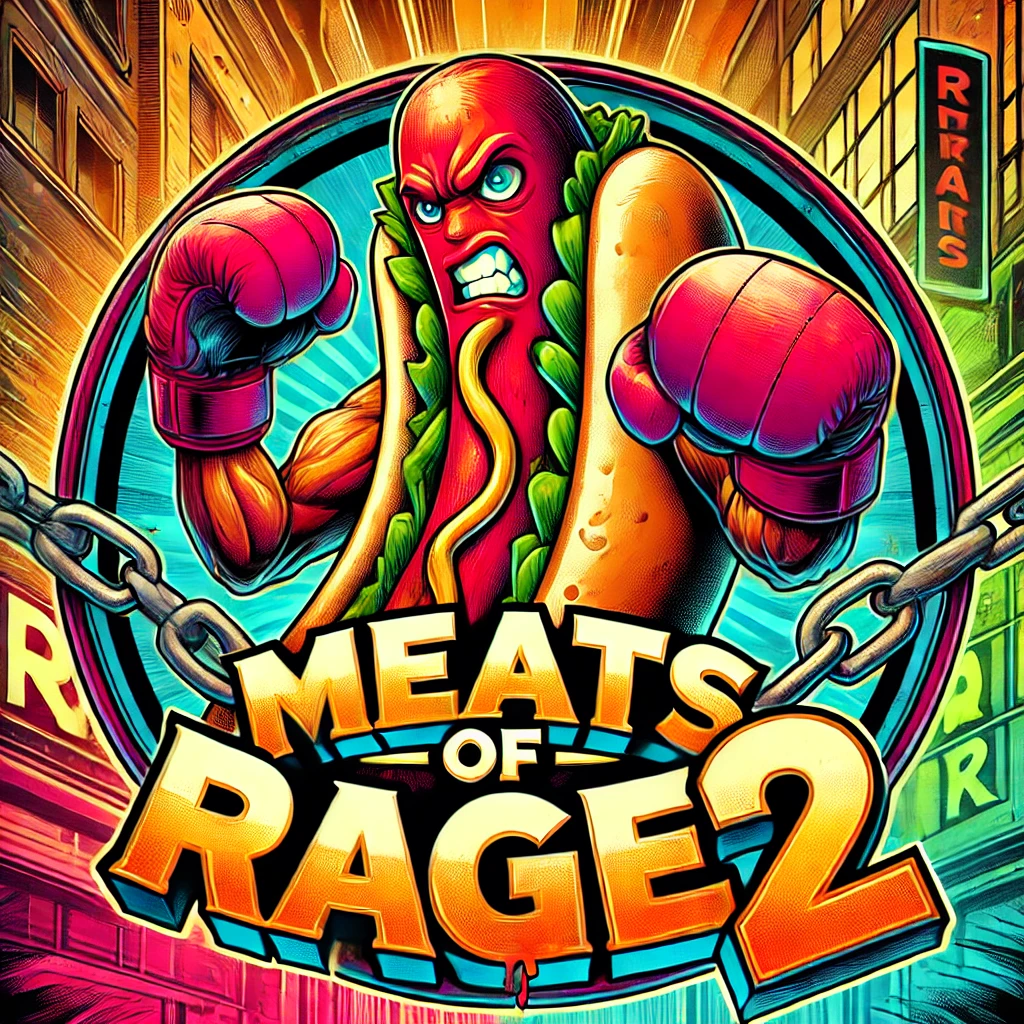Mine is Local Send which is a FOSS alternative similar to air drop that works across a variety of devices.
That would be Kodi which I now use on a Mini-PC with Lubunto which has replaced my TV Box and my Media Player (plus that Mini-PC also replaces a bunch of other things and even added some new things).
Before I went down a rabbit whole of trying to replace my really old Asus Media Player (which was so old that its remote was broken and I replaced it with my own custom electronics + software solution so that I could remote control that Media Player from an Android app I made running on my tablet) which eventually ended up with Kodi on a Linux Mini-PC also replacing my TV box, I had no idea Kodi even existed and was just using the old Media Player to browse directories with video files in a remote share (hosted on a hacked NAS on my router, a functionality which is now on that Mini-PC which even supports a newer and much faster SMB protocol) using a file browser user interface to play those files.
It was quite the leap from that early 00s file browser interface to chose files to play on TV to a modern “media library” interface covering all sorts of media including live TV (why it ended up also replacing my TV box).
I want to like Kodi, but Jellyfin just has a less obtrusive interface
I haven’t tried Jellyfin but people’s talk of it doing transcoding (which Kodi doesn’t need to do as it simply decodes the video stream and shows it on the video output) leaves me with the idea that it’s not quite the same and does things I don’t really need.
Yes, I liked the interface of Jellyfin as a more family friendly media browsing UI but I hate the wasted CPU cycles of transcoding unnecessarily.
I didn’t discover it this uear, but I started using QGIS professionally when the small city that hired me to, among a lot of other duties, be the new GIS department.
Turns out they thought ArcGIS cost the same as like Office or Acrobat, and they didn’t budget for it for the fiscal year that started 2 weeks before I started working.
Anyway, I’ve gotten pretty good with QGIS, and we’re sticking with it. It does everything I need it to do, and I can still pull stuff from most REST servers.
As a GIS person all I can is …fuck yeah. I’m for better or worse deeply embedded in the ESRI world but I’ve started dabbling in FOSS GIS software and honestly it’s all damn good. I don’t understand how ESRI charges what they do. Also, FME is amazing if you haven’t tried it yet (not free or open source) but awesome for quick visual development and data ETL.
I will give ESRI credit for their online stuff. It’s expensive, but it’s also pretty great. We’re actually thinking about getting an online subscription but no software licenses.
Honestly not a bad way to go about it
They tried to nickel and dime me on a $4000/yr product, but I’m just giving them the nickel.
We’ve been using QGIS at my company for almost 8 years at this point and I really love it. The python integration and deep plugin repository render it head and shoulders above ESRI. Although I admit for enterprise solutions many will still require the turn-key solutions esri offer.
Turns out they thought ArcGIS cost the same as like Office or Acrobat, and they didn’t budget for it for the fiscal year that started 2 weeks before I started working.
ESRI is in the position that Microsoft and Adobe want to be in, a de-facto monopoly.
Not discovered in the past year, but in the year before that:
Blender (program for 3D modelling, animation and rendering)
cobalt.tools(web-app for downloading video or audio content from youtube and other websites)
VLC (media player that plays almost everything)
Need to keep Cobalt Tools in mind. Was looking for something like that.
How does it compare to yt-dlp?
Warning, I might be wrong:
yt-dlp seems to be operated with command lines, whereas cobalt is a user interface in an opened browser tab. You paste the link of the desired video or audio source into a search bar and you can toggle different settings (bitrate, file format, video output size etc.). The desired file will be appearing as a download into your download folder.
Ooh nice - if it is indeed a UI it would be perfect for my grand-aunt. We went through many such alternatives, but all stopped working after a while
You might be lucky: there is a gui availiable for yt-dlp on GitHub. I just looked it up. The descripition reads:
Graphical interface for the command line tool yt-dlp, which allows users to download videos from various websites, including YouTube. It is designed to be more user-friendly and accessible for those who are not comfortable using the command line.
Link: https://github.com/dsymbol/yt-dlp-gui
Edit/addition:
There are online services availiable (for instance https://yt5s.com/en173) that basically do the same as Cobalt.tools. I assume that they don’t put any emphasis on privacy tho.
media player that plays almost everything
What doesn’t it play?
I discovered that VLC isn’t so good at playing .flv files. This are video files that are saved in the Adobe Flash Video container format. I have some episodes from cartoon series which I downloaded years ago. Sometimes there are no playback issues with VLC, but sometimes the audio track is delayed. For this reason I have installed IINA, but I like VLC’s user interface better.
Thankfully, vlc’s audio offset function is very easy to quickly adjust and save. As long as the audio delay is consistent you can adjust it pretty quickly.
Weirdly enough I often find things playing back better in IINA than VLC even though as I understand it they’re basically the same under the hood. I also find the reverse occasionally as well.
The funny thing is that said .flv files could be played with VLC without any issue at the time I acquired them. I downloaded a bunch of cartoon episodes in this file format back in 2010 (?) when once-click-hosters like Megavideo were a big thing then. I was able to play them with the then current version of VLC without any problems.
Since then there were several updates with VLC and some time along the way it suddenly didn’t work that good anymore. I might add that this file format is not very common today (it was, when Adobe Flash was still around), so today there might be no incentive to maintain any old codecs for these type of files any longer.
When it gets worse with dwindling playback compatibility I probably have to acquire these files with a more recent file format (e.g. .mp4) in the future.
You can convertí the files in another playable format with Handbrake, probably you Won’t need Change the codecs of the files only the container and the conversión will be fast than reencoding all
Yes, this would be an option (that I did not think of). But I assume that it would be easier to download the same file in another file format, as there will be probably an improvement regarding the video resolution (480p versus 1080p or higher).
You can, but it’s a lot of number crunching time to convert a bunch of files like that, as opposed to just using a different player.
It also in more recent years had an update that messed with it’s vcd playback ability. Don’t remember exactly the problem but I had a rip of an old vcd and was pleased that it played it back no trouble, and even from the original disc too but then a couple of years later it changed so I had to do something to extract an mpeg2 stream or something to get it to work and it from then on had audio issues that had never been there before.
The Stargate SG-1 DVDs for some reason. All others I tried work fine.
It’s not good at displaying anime fansubs if they have complex typesetting. I have to use MPC-HC + madVR. Sadly those fansub styles are a dying breed…
Banjo
It can’t go back one frame at a time yet has no problem going forward at the same pace.
Pathetic.
Are there any FOSS apps that can do this? MPV can move frame by frame but moving back is so unusably slow.
Depends on the machine and… maybe other things. I used to think that, too, but on my current machines I can step backwards just fine.
It’s probably a much more intensive operation requiring processing a lot of the file from before and throwing away current buffers or something.
I didn’t know cobalt.tools was OSS. cool!
I can live without Logseq but for work and keeping a log of how that worked (other than bash history) It’s really useful
Amazing journaling/personal information managment software. I love that once you understand how it works, you can journal however you like and it “maps” out how your connect concepts. Not exaggerating when I say it helped me piece a lot of concepts and personal themes together
Immich - Such a polished piece of software that I couldn’t imagine storing all my images without
Seconding this. Legitimately better than Google photos in a lot of ways, even if you don’t care about the data ownership aspect. If you’ve ever been annoyed at how Google Photos handles face detection / grouping, you’ll love Immich.
Thirded. Immich has no right to be as good as it is after such a short time. Completely took down my google photos, finally, and I still have face recognition, word search and automatic backup from my phone.
Revanced
Lemmy
It’s been a bit over a year for me, otherwise this would be the answer.
ZFS. It’s come so far, and it has so far to go. but it’s a good concept for sure.
I feel like if Sun had come out on top (instead of fucking Oracle), the tech space might be a better place
If they’d released the x86 version of Solaris when it became clear that SPARC couldn’t keep up with Intel and AMD that could have been a possibility.
Solaris was such an amazing OS.
Does oracle own the Solaris code now?
That’s my understanding. It’s a long time ago but I believe they bought out Sun when they were facing bankruptcy.
Jellyfin and the .arr suite.
It’s absolutely incredible and I am so greatful to anyone with the skillset and dedication to develop and maintain things like these.
Currently playing with Proxmox and HomeAssistant too.
Hat of to all of you legends involved in FOSS
Make sure you get a reputable VPN to avoid issues with any “questionably acquired” content.
Any suggestions? I currently have a nord subscription but it’s about to run out and I’m considering moving.
Mullvad is the gold standard
Proton
Mullvad is good like the other guy said but Proton has port forwarding, which if you don’t wanna be a HnR jerk you wanna do
Just use Usenet.
I’ve never been able to figure out how to use usenet. Do you have any suggestions on how to get started?
I know it’s reddit but this is a good guide. https://www.reddit.com/r/usenet/comments/18q7r0f/usenet_starter_guide/
Beyond that DM me for indexer invites if you seriously go down this path. Happy to help with any technical questions as well!
I’ve been very happy with a couple of indexers that I have paid for. I haven’t needed to really jump into the invite only world. There really is A LOT of content available easily. I’m sure more niche content might need more select access, but for me I haven’t gotten there. There was one Charlie Brown I have on VHS that took forever to find a better copy of, but I did eventually get a better version.
Same. I’m still primarily a Plex user for the player (it’s just easier for sharing libraries with everyone) but I love the arr stuff. Just got readarr setup for audio books and audiobookshelf for the player which is really nice.
Probably my favorite feature of the arr suite is in Radarr and list subscribing. I’ve got mine connected to some good letterboxd lists along with things like tmdb popular to keep my library up to date with recent stuff
Guix!
spotDL. Searches YouTube to download whole Spotify playlists and includes artwork and metadata.
Interesting…
I second local send :)
For some reason it never works for me, can’t locate the other device I want to send to/from.
Nothing. Discovered mine long before.
Not discovered last year but ffmpeg.Crazy how many tools it can replace and how many usecase it has
What exactly is FFMPEG an alternative to? I keep hearing people mention it, but I’ve never stopped to look into it until now.
I tend to do some very basic video editing just to put an image with an audio file so I can upload my music to YouTube. This can do what I need it to do? To what degree can this replace a video editor with a full graphical interface?
Edit: Nevermind. I definitely misunderstood what the tool was at a fundamental level. Got it now.
I picked up KdenLive for video editing and it’s pretty freaking good imo



















